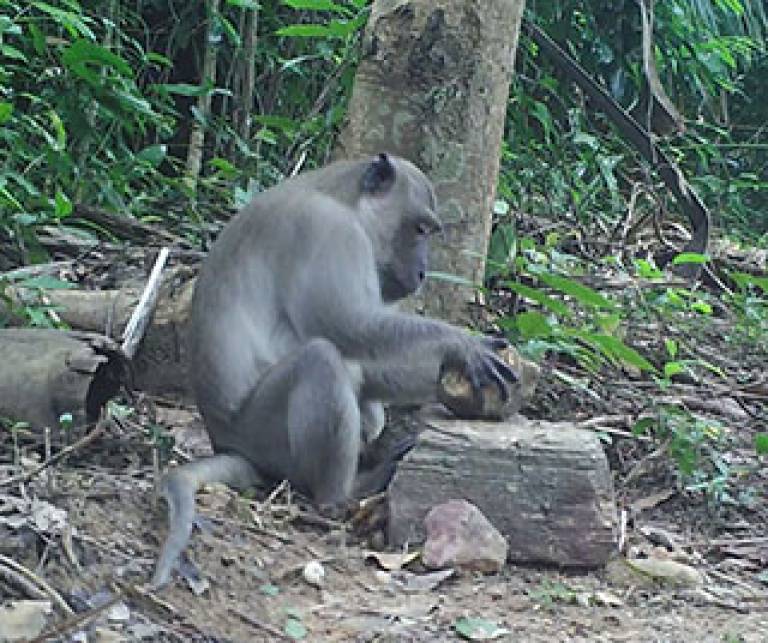Macaques choose stone tools based on own size and strength
26 March 2018
According to new research, led by the Institute's Tomos Proffitt, macaques appear to select stone tools based on the size and strength of their own body for efficiency.

In the paper published in the Royal Society Open Science, researchers from UCL, the University of Oxford, Oxford Brookes University, Chulalongkorn University (Bangkok, Thailand) and Nanyang Technological University (Singapore), have, for the first time, described the stone tools used by wild long-tailed macaque monkeys in southern Thailand to crack open oil palm nuts.
According to Tomos:
- "The stone tools we've uncovered show a high degree of battering and crushing on most surfaces. Interestingly, the stone tools are smaller than those used by wild chimpanzees for processing the same nut, and are smaller than those used by wild macaques to process another encased plant food, sea almonds. These new findings should help us to understand and compare skill levels between macaques and chimpanzees during tool use, and to assess differences in tool selection and mode of use."
The research team say this is an important step forward in the emerging field of primate archaeology, as it increases our understanding of how different non-human primates use stone tools in the wild, and may allow future insights into how early human ancestors developed and used stone tools.
Last year a team led by Lydia Luncz (University of Oxford), recorded wild long-tailed macaque monkeys on Yao Noi Island in Ao Phang Nga National Park using stone hammers and anvils to crack open hard shelled oil palm nuts in a similar way to that observed with chimpanzees.
This new follow-up study, led by Tomos, presents the stone tools used by these macaques, and characterises the damage produced by this behaviour. By applying archaeological techniques used in the study of primates and tool use, the researchers can study primate behaviour even when direct observation of the monkeys is impossible.
The research was funded by the European Research Council starting grant, a British Academy Fellowship, Leverhulme Research Grant and a National Geographic Waitt Grant.
Further information
- Proffitt T, Luncz VL, Malavijitnond S, Gumert M, Svensson MS, Haslam M, 'Analysis of wild macaque stone tools used to crack open palm nuts,' Royal Society Open Science.
 Close
Close

